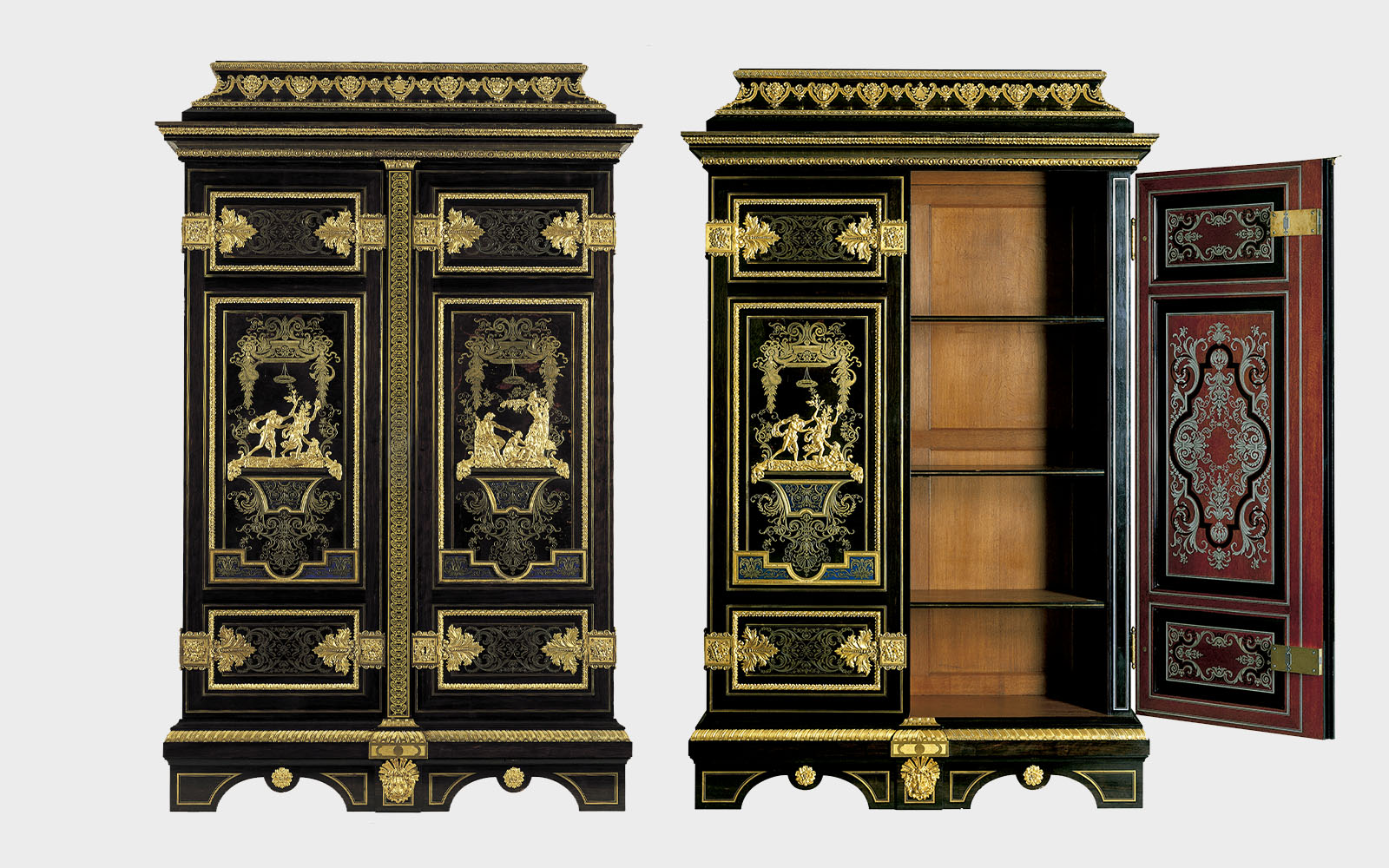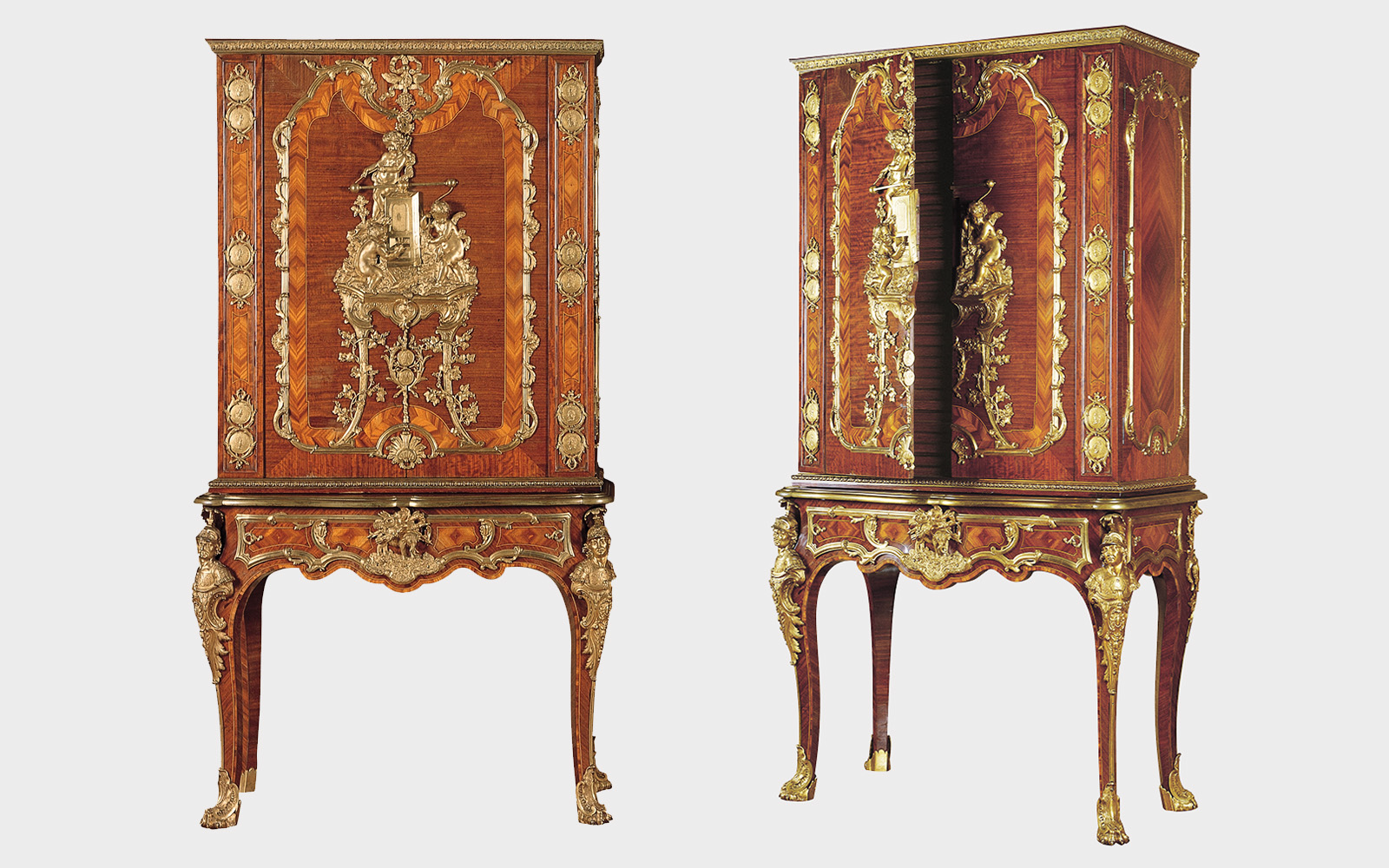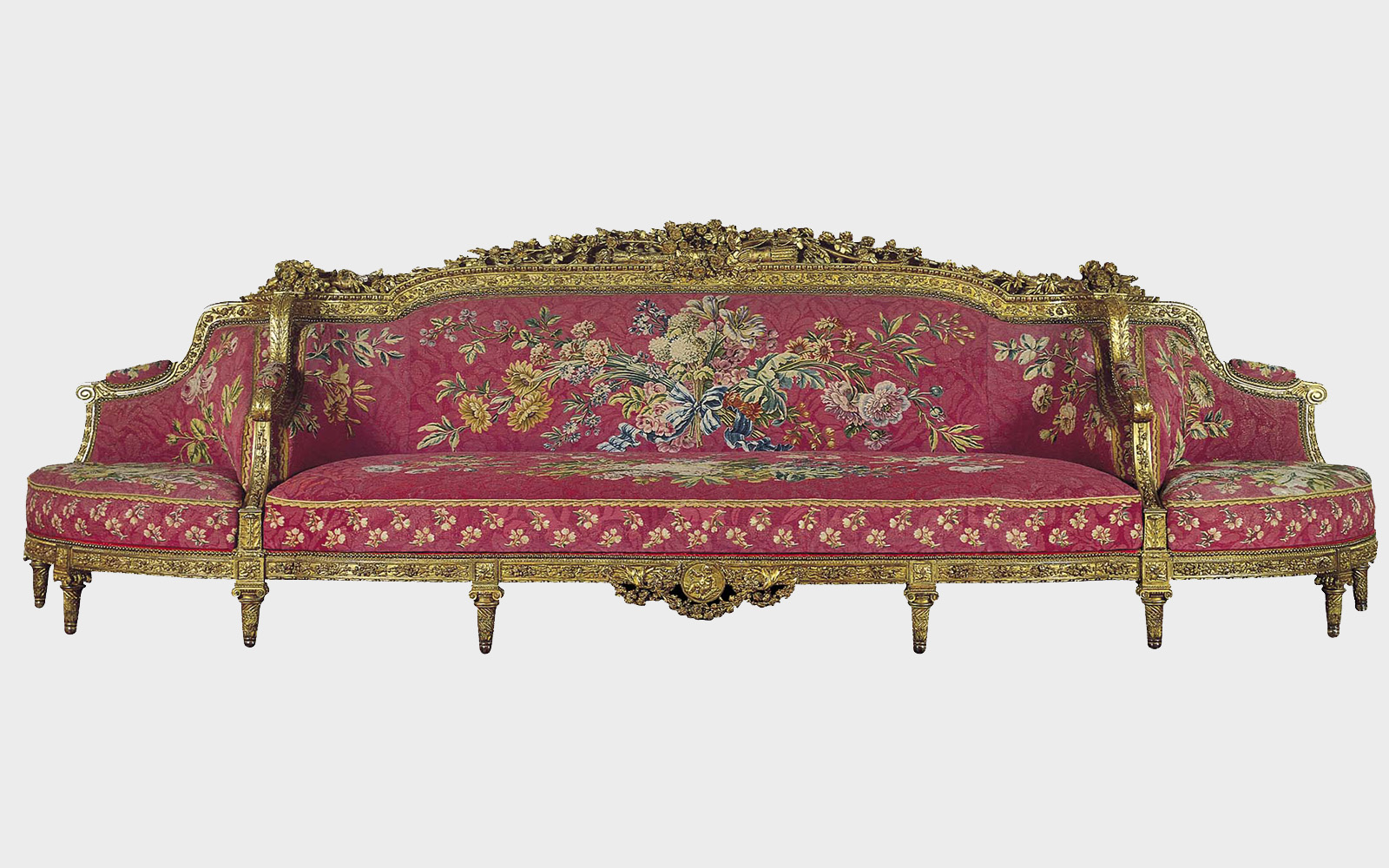Masters of 18th-century French furniture: Boulle, Cressent and Blanchard

With the renovation of the 18th-century gallery we will have the opportunity to see a new display of the exceptional pieces of furniture that belong to the Gulbenkian collection. We are talking about works produced by some of the most important carpenters and cabinetmakers of the time and which demonstrate the degree of sophistication and artistic and technical quality that this art achieved during this period.
In this gallery we can observe the evolution of furniture over the course of the 18th-century, not only with respect to its lines, but also in terms of materials and techniques, being able, therefore, to have a very approximate idea of what furniture was at this time.
The Boulle armoires are an example of what was produced in the late 17th and early 18th-century. André Charles Boulle’s quality and skill led to his nomination as ‘Master cabinetmaker to the King’ by Louis XIV and to his installation, under royal protection, in the Galleries of the Louvre, in Paris.
His work, of an imposing and majestic nature, was one of those which most identified with the monarch’s personality. The most striking feature of his production is the marquetry work in tortoiseshell and brass. Although Boulle did not invent this technique, it was he who developed it, fully exploiting its potential.

From well into the 18th-century we have the magnificent pieces by Charles Cressent, cabinetmaker of the Regent (Duke of Orleans), and the most prestigious of his time. His work is characterised by a monumentality in which the bronzes, magnificently chiselled and gilded with an enormous artistic sensibility, acquire unprecedented importance and splendour. His inlays and veneers are conceived in order to enhance the bronzes.
Cressent’s work achieved a true international dimension. Although he was active until the second half of the 18th century, well into the reign of Louis XV, he was the regency cabinetmaker par excellence. His production was always faithful to the ‘style’ he created in the 1720s. Cressent worked for most of the French aristocracy. The museum holds an important collection of furniture by this cabinetmaker, the medal cabinets probably being the most imposing.

However, if we are talking about imposing pieces, we cannot fail to mention the ‘canapé à confidents’, commissioned for the summer salon of Louis XVI’s aunts, in the Bellevue Palace. This canapé bears the stamp of Jean-Nicolas Blanchard, a carpenter from a family with a tradition in this art. He became a master in 1771 and shortly afterwards he began to work for the royal family.

Blanchard specialised in seats. His chairs and sofas, among others, are distinguished by their elegant and proportionate lines, harmoniously combined with rich sculptural decoration. Blanchard was always very demanding when choosing the sculptors with whom he collaborated, and this is reflected in his work. His most interesting phase is perhaps the so-called ‘transition’ phase, where he combined elements of Louis XV and Louis XVI in a surprising way, achieving a great artistic effect. This typology of canapé is an example of the creativity and virtuosity of French carpenters of this period.
Clara Serra
Curator of the Calouste Gulbenkian Museum